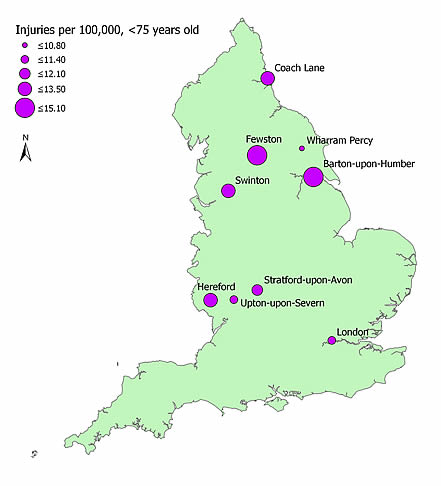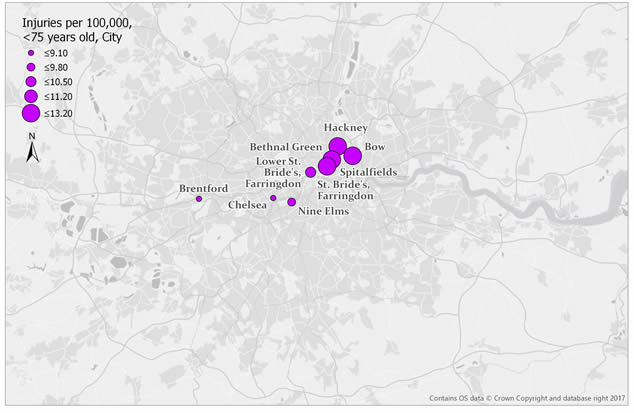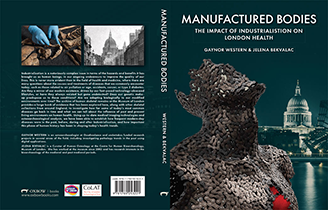Accidents and trauma today
Patterns of trauma today continue to change and the risk to our bodies evolves as we manufacture and modify the environment around us.
Today, rib fractures are reported at a much lower rate whereas fractures to more robust elements such as the femur in the leg and humerus in the arm are more common. This is a reflection of our increasing need for speed and efficiency. Large long bones need a much more considerable force impacting on them to result in a fracture and very often these types of fractures are associated with impacts at high speed in motor vehicle collisions and sporting injuries involving high speed vehicles.
What’s interesting is that the increase in trauma experienced by Londoners during the Industrial Period has now reversed and that risk of fatal injuries in the under 75’s is now much higher again outside the city.
Areas such as Fewston in Yorkshire and Barton-upon-Humber experience much higher rates of fatal injuries than London. As a banking and trading capital with far less manufacturing going on, it once more employs a much larger number of people in clerical roles and hence the rates of injuries have been reduced.
Some things haven’t changed though. Within London, much higher rates of fatal injuries are experienced in low status areas in the East End than the rest of the city. The social status divisions created during the Industrial period still prevail and impact on risk to physical trauma in London today.
Road traffic accidents are also much greater in number outside of London with one exception – central London itself, which has one of the highest rates of road injuries and deaths in England and Wales, due to the sheer volume of traffic along its overcrowded streets. Nonetheless, greater regulation of transport means that these types of accidents have been significantly reduced in our modern day living.
Interpersonal violence, unfortunately, has not followed this trend and has been highlighted by the campaign to reduce knife crime. In 2017, there was a shocking rise of 22% in offenses involving knives in England and Wales. Police-recorded offences data for 2016/7 show far higher levels of knife crime involving attempted murder, homicide, actual bodily harm and grievous bodily harm in London than the rest of England.

The Knife Angel Sculpture, National Monument against Violence and Aggression, Hull (Credit: Dom Fellowes, cc-by/2.0, https://www.flickr.com/photos/domfell/40109423003)
More optimistically, however, the regulation of sports means that they are much less dangerous activities than they once were and fatalities are rare. Body contact is very much restricted in most sports, protective head gear is commonplace and there are clear rules stipulating immediate medical checks for head injuries in contact sports like rugby. One area of question is whether repeated low impact blows to the head might cause dementia later in life, but no concrete evidence of this has yet been found.
Next: The air we breathe










